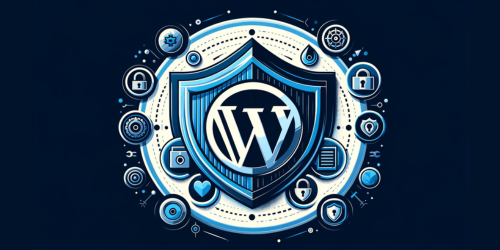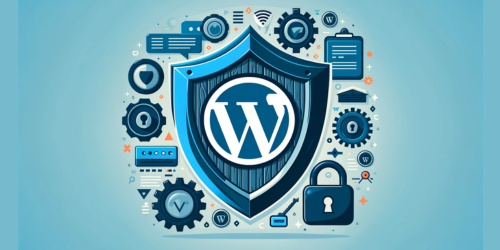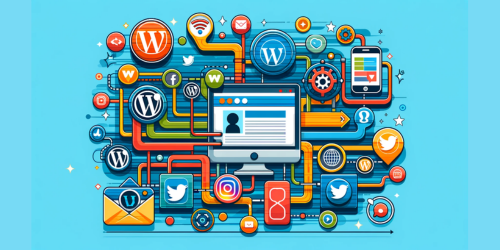In today’s digital age, your website is often the first impression you make. And if you’re using WordPress, understanding how it stores pages is paramount. Think of it as knowing where the foundation of your house lies. Without this knowledge, optimizing, troubleshooting, or even basic management can become a daunting task. For website owners, this isn’t just about technical know-how. It’s about ensuring that the heart of your digital presence – your content – is secure, accessible, and managed efficiently. After all, in the vast world of the internet, your content is your voice, and knowing where and how it’s stored is the first step in ensuring it’s heard loud and clear.
1. Understanding WordPress Storage
At its core, WordPress operates as a database-driven platform. But what does that mean? In essence, every piece of content you create, every comment received, and every setting you adjust gets stored in a structured database. This database is the heart of your WordPress site, ensuring that content is fetched and displayed to your visitors upon request.
Now, let’s draw a distinction. Traditional websites were often ‘static.’ Each page was a separate HTML file, and any changes required manual editing of these files. These static sites were like fixed menus in a restaurant, unchanging unless manually updated.
Enter ‘dynamic’ websites, like those powered by WordPress. Instead of individual files for each page, they use templates to display content from the database dynamically. Imagine a restaurant with a digital menu that updates in real-time based on the ingredients available. When a visitor accesses a post or a page, WordPress constructs it on-the-fly using the template and the relevant database content.
This dynamic approach offers immense flexibility. It allows for real-time content updates, user interactions, and customization, all without the need to edit individual page files. In the grand tapestry of the web, understanding this dynamic nature of WordPress storage is pivotal for any site owner.
2. WordPress Posts and Pages: Where Are They Stored?
When you draft a new post or design a fresh page on WordPress, ever wonder where all that content goes? The answer lies deep within the WordPress database, specifically in a table named WP-Posts.
The WP-Posts table is like the central library of your WordPress site. It doesn’t just store posts and pages; it also holds revisions, custom post types, and even attachments. Each entry in this table has a unique ID, ensuring that the right content is fetched when requested.
Now, if you’re feeling adventurous and wish to see this table for yourself, here’s a step-by-step guide:
- Accessing cPanel: Begin by logging into your hosting account. Once inside, navigate to the cPanel dashboard, the control room for your website’s backend operations.
- Locating PHPMyAdmin: Within cPanel, you’ll find an array of icons. Look for one labeled ‘PHPMyAdmin’ and click on it. This tool is your gateway to the WordPress database.
- Navigating to the Database: Once inside PHPMyAdmin, you’ll see a list of databases on the left. Select the one associated with your WordPress site. If unsure about the name, you can find it defined in the
wp-config.phpfile of your WordPress installation. - Opening WP-Posts: Within the database, you’ll find several tables, each prefixed with ‘wp_’. Locate and click on
wp_posts, and voila! You’re now looking at the storage space for your posts and pages.
Remember, while it’s enlightening to explore, always tread with caution. One wrong move in PHPMyAdmin can disrupt your site, so always ensure backups are in place.
3. Delving Deeper: WordPress Files and Directories
Beyond the database, WordPress is also composed of a myriad of files and directories that work in tandem to deliver the website you see. Let’s embark on a journey through this intricate maze.
The WordPress Directory Structure:
At the root of any WordPress installation, you’ll find core directories like wp-admin, wp-includes, and wp-content. While the first two are dedicated to the WordPress admin area and core system files respectively, it’s the wp-content directory that often piques interest.
The Significance of WP-Content:
The wp-content folder is akin to the treasure chest of your WordPress site. It houses:
- Plugins: These are extensions that add functionality to your site. Each plugin you install gets its own directory here.
- Themes: The visual styles and templates for your site reside here. Each theme you’ve ever installed, active or not, has its folder.
- Uploads: Every image, video, or file you’ve ever uploaded to your site is stored in this directory, typically organized into month and year-based folders.
Themes: The Wardrobe of Your Website:
Within the wp-content directory, the themes folder holds particular importance. Each theme is a collection of stylesheets, template files, and functions that dictate your website’s appearance. Switching a theme can dramatically alter your site’s look and feel, all while the content remains untouched in the database.
In essence, while the database is the brain storing all the content, the files and directories are the body, shaping how this content is presented. Together, they form the complete WordPress organism.
4. Customizing WordPress: Themes, Plugins, and More
WordPress, in its vanilla state, is a blank canvas. It’s the themes and plugins that add color, shape, and functionality, turning that canvas into a masterpiece tailored to your vision.
I. Themes: The Aesthetics of Your Site:
Themes dictate the visual presentation of your website. From typography to color schemes, from layouts to responsive designs, themes control it all. These are stored in the wp-content/themes directory. Each theme has its dedicated folder here, packed with PHP, CSS, and sometimes JavaScript files that define its design and behavior. Delve into the Theme Editor in WordPress.
II. Plugins: Adding Superpowers to WordPress:
While themes manage the look, plugins handle the functionality. Want an e-commerce store? There’s a plugin for that. Need SEO tools? A plugin has you covered. Each plugin, upon installation, resides in the wp-content/plugins directory. Like themes, every plugin gets its folder, containing all its scripts, styles, and assets.
III. The Lifeline: Regular Backups:
Customizations make your site unique, but they also increase its complexity. With every theme or plugin added, the risk of conflicts or potential issues rises. Hence, regular backups are non-negotiable. They act as safety nets, ensuring that in the face of any mishap, your content, customizations, and hard work remain intact and restorable.
In the realm of WordPress, themes and plugins are the magic wands, but backups? They’re the safety nets, catching you when things go awry.
5. Advanced Customizations: HTML, CSS, and PHP in WordPress
Diving into the technical depths of WordPress reveals a harmonious dance between PHP, HTML, and CSS. Let’s demystify this intricate ballet.
I. PHP Scripts Generating HTML:
At its heart, WordPress is powered by PHP, a server-side scripting language. When a user visits a WordPress site, PHP scripts run, fetch content from the database, and generate the HTML that browsers can display. It’s a dynamic process, ensuring that the latest content is always presented, without the need for static HTML files.
II. Custom HTML Blocks in the Editor:
While WordPress automates much of the HTML generation, there are times when manual intervention is desired. Enter the custom HTML blocks in the WordPress editor. These allow you to directly input HTML, giving you granular control over specific parts of your content. Whether it’s embedding a video or crafting a unique layout, this block offers flexibility.
III. Integrating SVG and Custom Codes:
For those looking to elevate their site’s visuals, SVG (Scalable Vector Graphics) is a game-changer. To integrate SVG or other custom codes, ensure your theme supports it. Then, use custom HTML blocks or theme functions to embed your code. Always remember to validate and sanitize custom codes to maintain site security.
In the vast ocean of WordPress, understanding these advanced customizations is like having a compass, guiding you towards a truly unique digital destination. Must Know the WordPress Rewrite Rules for better customization of your site.
6. Best Practices for Managing WordPress Content
Managing content on WordPress is akin to curating a digital library. Regular backups are the cornerstone of this curation. Imagine pouring hours into creating content, only to lose it all in a technical glitch. Backups act as your safety net, ensuring your content remains retrievable. Beyond backups, organization is key. Categorize posts, use consistent naming conventions, and regularly audit your content for outdated information.
Additionally, monitor website health by checking for broken links, optimizing images for faster load times, and updating plugins and themes. In essence, treat your WordPress site with the same care as a prized collection, and it will serve you reliably and efficiently.
7. Conclusion
Grasping WordPress storage is pivotal for adept website management. It’s the foundation upon which your digital presence stands. As you journey through the world of WordPress, let curiosity be your guide. Explore, experiment, and elevate your site to its fullest potential.
8. FAQ
Q: Where are my WordPress pages located?
A: WordPress pages are stored in the WordPress database, specifically in the wp_posts table. They aren’t stored as separate files but are dynamically generated from the database when requested.
Q: What folder are WordPress pages in?
A: While the content of WordPress pages is stored in the database, the templates and themes that dictate their appearance are located in the wp-content/themes directory of your WordPress installation.
9. Additional Resources
For those eager to delve even deeper into the intricacies of WordPress, we’ve curated a list of invaluable resources from our very own WPPedia:
- Where are WordPress Pages Stored in File Manager?
- Dive into the specifics of WordPress file storage. This guide provides a detailed walkthrough of how and where WordPress pages are stored, offering insights for both beginners and seasoned users.
- WordPress: From Blogging Platform to CMS Giant
- Explore the evolution of WordPress. This article traces the platform’s journey from its blogging roots to its current status as the world’s leading CMS.
- Unraveling the WordPress Database
- A deep dive into the heart of WordPress: its database. Understand the structure, components, and significance of where all your content resides.
- Decoding WordPress: Where Do Posts Go?
- Ever wondered about the journey of a post once it’s published? This resource demystifies the process, explaining how posts are stored and retrieved.
- WordPress Files on Linux: A Comprehensive Guide
- For those running WordPress on Linux, this guide is a must-read. It breaks down the storage structure, helping users navigate the Linux environment with ease.
We encourage you to explore these resources, enhancing your WordPress knowledge and empowering you to make the most of your website.



